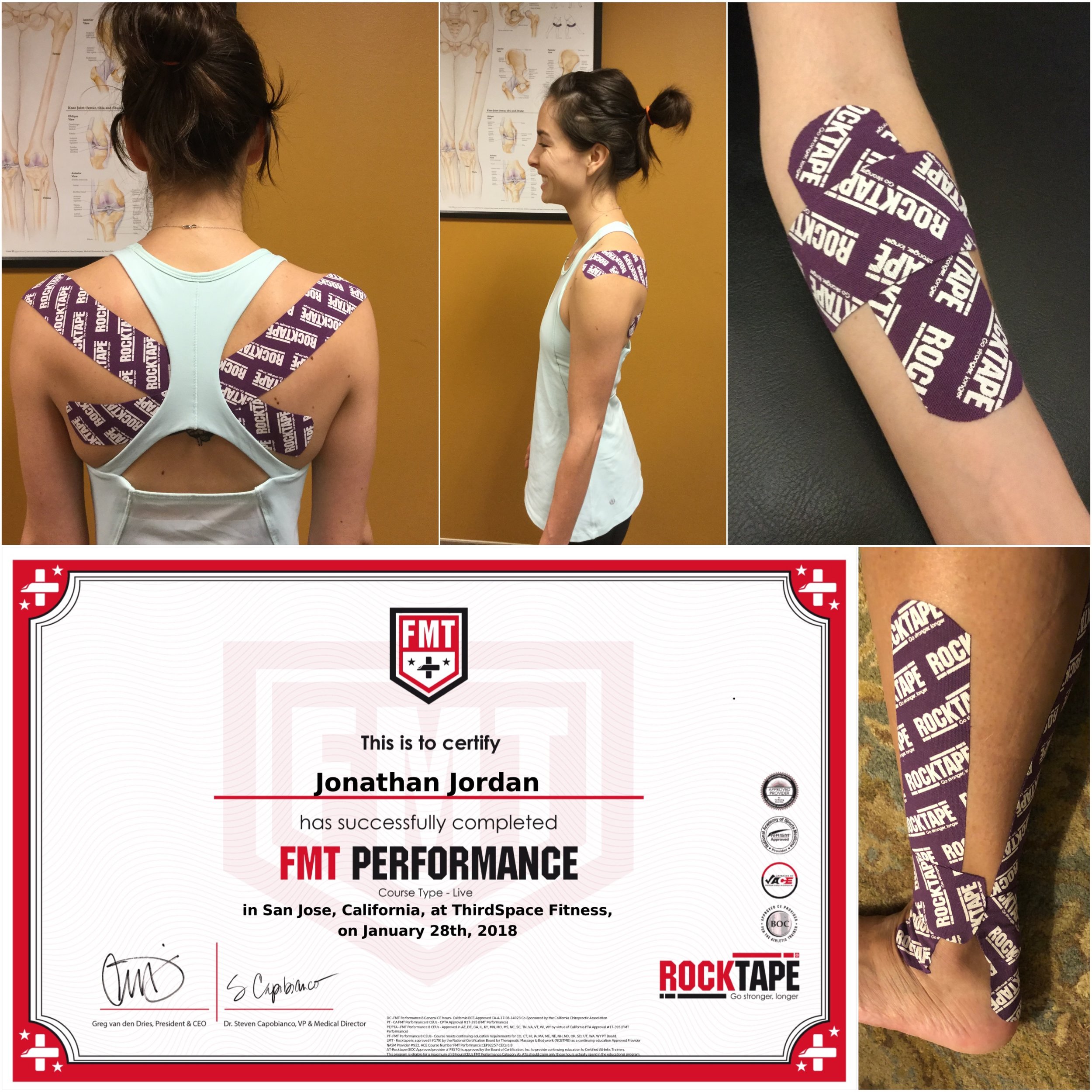Kinesiology Taping for Pain, Posture and Performance
/I recently spent an entire weekend geeking out over fascia, feet and movement with the amazing Dr. Courtney Conley. It was awesome to be in a room with dozens of physical therapists, chiropractors, emergency responders and massage therapists all focused on helping our clients reduce pain and improve their movement. Based on my own personal experience with kinesiology tape I wanted to learn more about it as a tool to help with pain, posture and performance. I left the weekend not only with two FMT certifications for assessing clients and applying kinesiology tape, but with a renewed passion and fascination for how the brain and body are connected and how we can improve that connection through physical stimulus like kinesiology tape.
How Kinesiology Tape Works
In a nutshell, tape changes sensory input for a change in output. Tape stimulates the skin and mechanoreceptors which provide the brain information. With this new information the brain can improve our motor output for reduced pain and better movement. If you want to dig into the weeds including clinical research and studies that validate its effectiveness you can check out these slides from the basic and performance courses offered by RockTape. For a discussion on the notion of pain as an experience of the brain and research on this idea, check out this article from Scientific American.
Taping Applications
Clinical research (and more anecdotal evidence and personal accounts from the medical, training and sporting communities than you can shake a stick at) validate kinesiology tape can help with:
- Pain/Swelling/Edema/Scars - Taping asserts the body's own healing mechanisms to speed recovery from injuries.
- Posture - Taping helps to improve length/tension relationships in the fascia and muscles.
- Performance - Taping along the body's fascial trains can help improve form for movement patterns like squatting, pressing, etc.
But...
Tape alone is not a permanent solution or "cure" for pain, injuries and compensations. It has to be used hand-in-hand with medical attention, physical therapy, corrective/strengthen work and behavior/lifestyle change or it won't stick. It literally is a bandaid. A helpful, awesome one that can reduce pain and help. But it's one tool in a larger treatment strategy.


